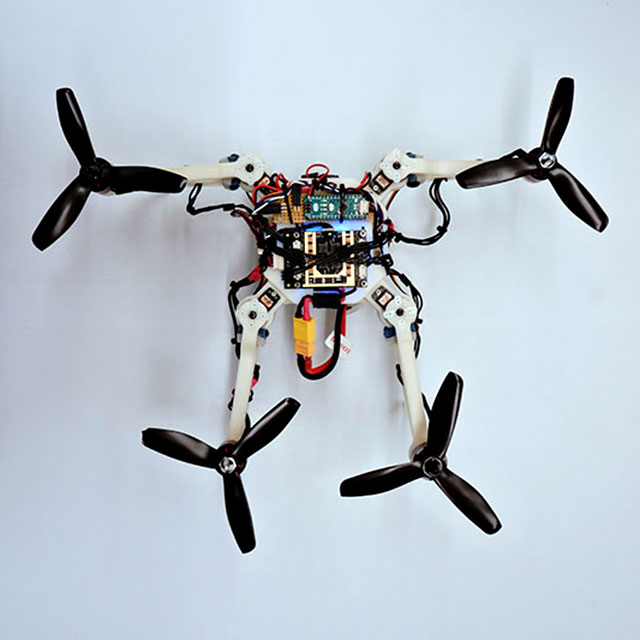Drones are suited for search and rescue operations, but they will be even better if they can pass through small openings to explore, say for example, damaged buildings. Instead of making drones smaller, which will inadvertently limit their functionality, JSK Lab at University of Tokyo proposes a segmented flying robot called DRAGON, and today, we learned that University of Zurich has one up that with a less creepy and very, very impressive drone.
Morphing Quadrotor Drone, as it is called, is a foldable Micro Aerial Vehicle (MAV) that is outfitted with vision-based navigation to enable it to fly on its own without human intervention. Morphing Quadrotor Drone uses onboard cameras and inertial sensors to “see” the world and to “orientate” itself. There’s no GPS, no laser, or any form of external positioning system, thereby allowing it to enter and explore damaged buildings and cavernous area which would be impossible with conventional drones that rely on some sort of positioning technology.
Its smart computer vision also enables another rather mind-blowing feature: morphing. Together with folding rotor arms, this miniature autonomous flying contraption can detect the size of a passage way, be it horizontal or vertical, and changes its size on-the-fly to make the entry. Morphing Quadrotor Drone is perhaps one of the most impressive drone development we have seen thus far. Unlike the DRAGON, its adaptive morphing technology enables it to change its size and form very quickly while maintaining stable flight the entire time.
And oh, the folding arms can even double as a grabbing device too, allowing it to pick up small objects. Continue reading to see this amazing drone in action.
Images: University of Zurich.
Source: Robotics and Perception Group, University of Zurich.






